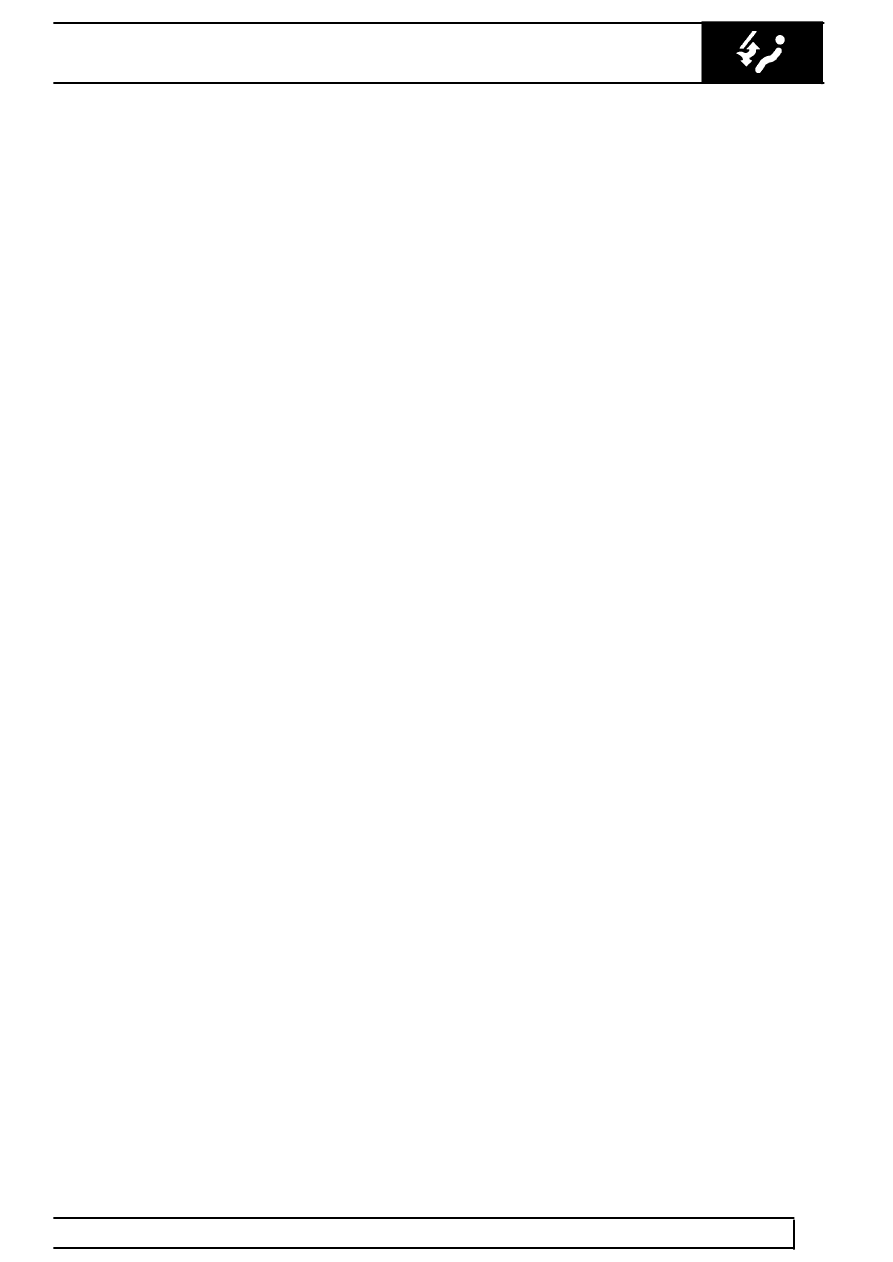Range Rover P38

HEATING AND VENTILATION
9
DESCRIPTION AND OPERATION
The Heater ECU operates the heating and ventilation
system to produce the conditions selected on the
control panel. The system operates when the ignition
switch is in position II. For operation of the automatic
demist function, the engine must be running. Power
for system operation is supplied from the engine
compartment fuse box. The BeCM supplies the
Heater ECU with auxiliary power and an engine
running signal.
Fresh/ Recirculated air selection
When the fresh/ recirculated air switch is pressed, the
switch LED illuminates and the Heater ECU supplies
battery voltage to the fresh/ recirculated air servos to
drive the flaps in the air inlet housings to the
recirculated air position. A second press of the switch
extinguishes the LED and the Heater ECU reverses
the polarity of the supply to the fresh/ recirculated air
servos, which then drive the flaps to the fresh air
position.
Blower control
Battery voltage is supplied to the positive side of the
blower motors via the auxiliary relays. Blower speed is
controlled by the blower rotary switch, which regulates
the voltage of blower control signals from the Heater
ECU to the negative side of the blower motors. At the
off position, the blower control signals are equal to
battery voltage. Turning the blower rotary switch
clockwise progressively reduces the voltage of the
blower control signals, and increases blower speed,
until the signals are earthed and the blowers are at
maximum speed. When the demist mode is active, the
Heater ECU overrides the rotary switch and operates
the blowers at maximum speed.
For diagnostic purposes, the Heater ECU monitors the
blower motor’s positive and negative voltages via the
blower voltage feedback and blower safety inputs
respectively.
Temperature control
When one of the temperature control switches is
turned the Heater ECU supplies battery voltage to the
related temperature servo to drive the flaps in the
heater unit to the applicable position. To change the
direction of drive, the Heater ECU reverses the
polarity of the supply.
Distribution
When one of the distribution switches is pressed, the
switch LED illuminates and the Heater ECU supplies
battery voltage to the distribution servo to drive the
flaps in the heater unit to the applicable position. To
change the direction of drive, the Heater ECU
reverses the polarity of the supply.
Demist mode
When the PROG switch is pressed, the Heater ECU
overrides the manual selections and operates the
heating and ventilation system in the automatic demist
mode. A second press of the PROG switch returns the
system to the previous manual settings. While the
automatic demist mode is engaged, the windscreen
and rear screen heaters can be operated to reset their
timer start point without effecting the demist
programme.
Self tuning
Periodically, the Heater ECU performs a self tuning
routine of the temperature and distribution servos, to
accommodate bedding in of the flaps and their control
mechanisms. During the routine, operation of the
blowers is inhibited and the servos are driven through
their full range to re-calibrate their flap positions. The
routine is invoked at the beginning of the 1st, 10th,
20th, 50th, 100th, 500th and every subsequent 500th
start up. The routine should also be invoked, using
TestBook, after replacement of a temperature or
distribution servo.
Diagnostics
The Heater ECU continuously monitors the servo and
blower circuits for continuity and short circuits. The
feedback signals of the temperature and distribution
servos are also checked for plausibility at each end of
the servo travel range. If a fault is detected a related
fault code is stored in memory and can be retrieved
using TestBook.
